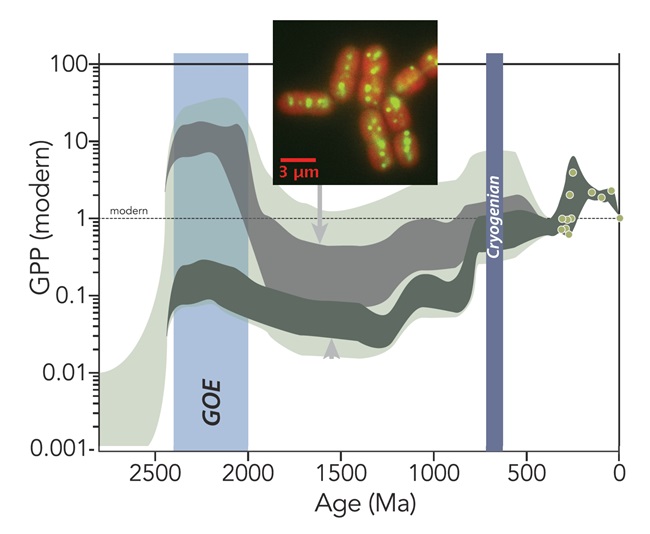Abstract:
The Proterozoic Eon (2.5 to 0.541 billion years ago) marks a long turning point in Earth’s planetary evolution away from the anoxic alien world of the Archean to the oxygenated familiar world of the Phanerozoic. In this talk, I will address two fundamental questions about the Proterozoic biosphere: (1) how broad was the trophic foundation supporting the global Proterozoic ecosystem; and (2) who were the primary producers that sustained this foundation? Peter Crockford (Weizmann), Huiming Bao (LSU) and I have approached the first question by tracking the relative abundances of the rarest isotope of oxygen (17O) in Proterozoic sulphate deposits, which preserves a partial but robust archive of atmospheric O2 at this time. We find that oxygenic primary productivity has varied significantly throughout the Proterozoic, from levels approaching modern values during the great oxidation event to levels 10 to 100 times smaller for a wide span of Proterozoic time. Sarah Hurley (CU Boulder), Jeff Cameron (CU Boulder), and I have approached the second question by determining the magnitude and variation of 13C-12C separation by an extant β-cyanobacterium as well as a potential physiological analogue of its Proterozoic ancestors. We find that a conciliant interpretation of the Proterozoic carbon isotope record implies evolutionary stasis in cyanobacterial physiology on morphological, organellar and, possibly, biochemical scales. This interpretation rules out a number of evolutionary hypotheses for why Proterozoic primary productivity was so low and opens the door to direct tests of environmental and ecological reasons for limited Proterozoic primary productivity through experimental comparative physiology.

Speaker: Boswell Wing, Department of Geological Sciences - University of Colorado Boulder
Date: 27 September, 15:30-16:30 at Mishima Hall (ELSI-1)
Host: Shawn McGlynn
